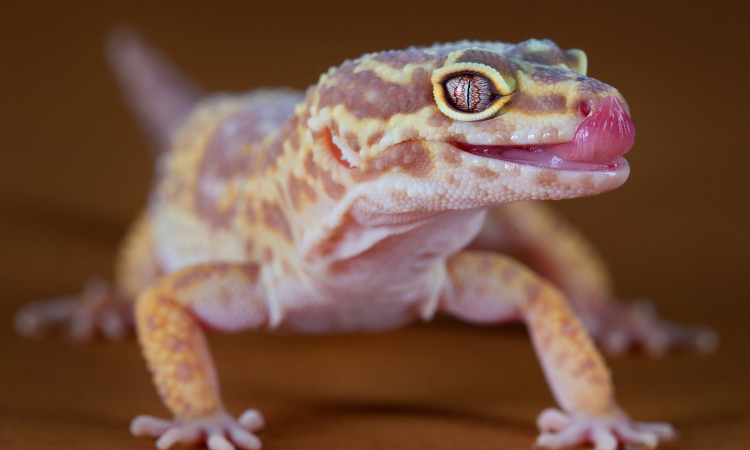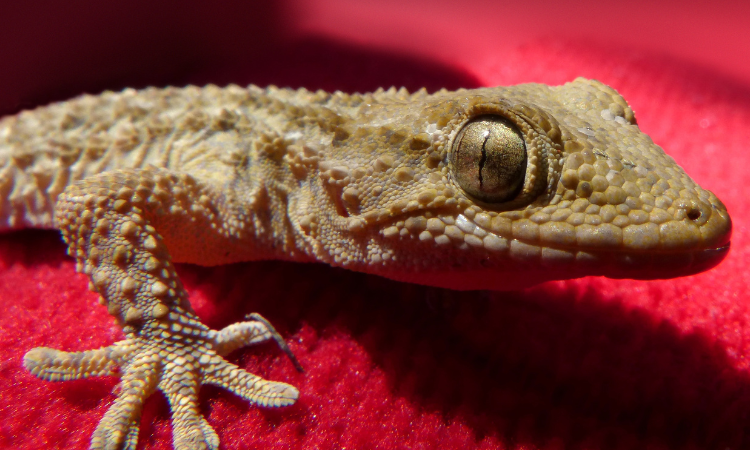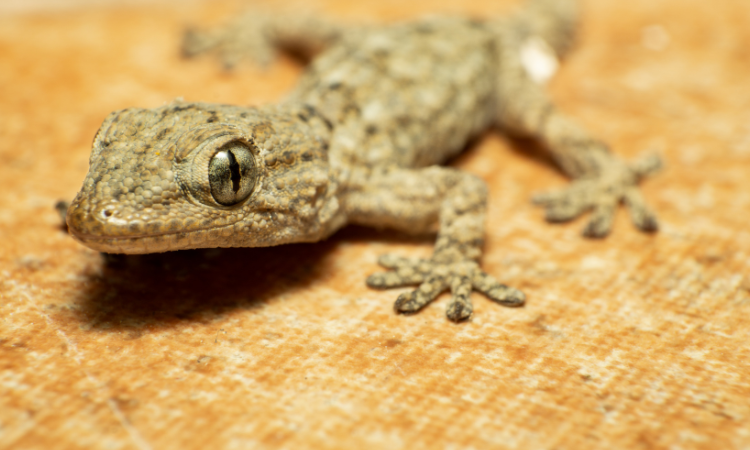Green and brown are the two most common colors among geckos. Geckos typically turn brown when they reach adulthood. There are a few reasons why this happens.
First, adult geckos tend to be less active than their younger counterparts. This means that they spend more time in hiding, which can lead to a loss of coloration.
Second, adult geckos may also suffer from stress or illness, which can also cause them to lose their color.
Finally, some gecko species simply change color as they age. If you’re concerned that your gecko is turning brown, it’s always best to consult with a veterinarian or experienced reptile keeper for help.

Geckos are able to change their color for camouflage and communication
Fascinatingly, geckos are unique animals that have the ability to instantly morph their color in order to become almost invisible against a wide variety of backgrounds. By lightening or darkening their hue, they can utilise this incredible capability for the purpose of camouflage and communication.
In fact, some gecko species may even turn brown when threatened as a signal to potential predators! Thus, it is important to note that their extraordinary ability to change colour not only helps them remain hidden but also allows them to express themselves.
There are two types of cells that allow geckos to change color – chromatophores and iridophores
Geckos are known for their unique ability to change color, something many other species cannot do. This is possible due to two types of cells in gecko skin – chromatophores and iridophores. Chromatophores contain pigments and can darken or lighten the skin to blend in with surroundings.
The iridophores are responsible for the geckos’ characteristic sheen and have a reflective quality that helps regulate heat absorption and potential predators. Together, these two cell types allow geckos to undergo incredible physiological transformations in seconds, camouflaging them when necessary or helping them maintain optimal body temperatures.

Chromatophores contain pigment that can be expanded or contracted to create different colors
Geckos are one of the few animals that have the incredible capability to change color. A gecko’s ability to alter its appearance is due in large part to chromatophores, which are clusters of pigment in their cells containing molecules that can be expanded or contracted realistically.
This causes gecko skin cells to respond differently depending on their environment, and geckos will expand or contract the chromatophores accordingly. This can cause geckos to quickly turn dark brown when faced with danger. By having this capability geckos are able to disguise themselves and hide from potential predators.
The fascinating way geckos can camouflage so flawlessly demonstrates the amazing intricacy found in nature.
Iridophores reflect light, which creates a shimmering effect on the skin
Geckos are some of the most striking, visually-appealing animals in the animal kingdom. One of their main features is the shimmer that often appears on their skin.
This sparkling effect comes from iridophores, which are special pigment cells found in gecko’s epidermal layers that reflect light differently depending on the gecko’s angle.
The gecko’s skin structure works to control how much blue or yellow light is reflected, primarily causing it to change color from red and white to brown.
These changing colors give geckos an advantage as a form of protection from predators, as they can easily blend in with different colored backgrounds.
The ability to change color is helpful for thermoregulation, mating, and avoiding predators
Geckos are an incredible species with the special ability to interact and communicate with their environment via color-changing behavior. This astounding chameleon-like adaptive trait helps geckos thermoregulate their bodies in warm climates, attract a mate, and elude predators.
Specifically in geckos, various shades of brown act as camouflage when the gecko is trying to find a safe place to rest for the night. Thus, the gecko’s coloring plays an important role in survival and shows how adaptable animals can be in order to better fit into their environment.

Some gecko species can even change their patterns and colors depending on their mood
Geckos are an amazingly adaptive species. Not only do geckos have the ability to change their skin color from light shades like beige or white, to dark shades like brown or black; but some gecko species can also change their patterns and colors depending on their mood!
Through this natural adaptation geckos are able to blend into their environment flawlessly, which makes them well protected from predators. This amazing process is rarely seen in other species, so geckos truly stand out due to the many ways they can manipulate their look.
Geckos are pretty amazing creatures – not only can they change their color, but they can also use this ability for a variety of purposes. By understanding how chromatophores and iridophores work, we can gain a greater appreciation for the incredible abilities of these animals. Who knew that such tiny lizards could be so fascinating?
Related posts:

Hi – I’m Erika, the lead gecko enthusiast here at Geckopedia! I write articles about pet geckos, including what to feed your leopard gecko and how to help your pet gecko live a long, happy life! I graduated with advanced degrees from UC-Berkeley, the University of Southern California (USC) and Indiana University-Bloomington, where I studied Biology and Animal Science. I use my experience to help others learn about gecko care, and I am an advocate for all topics gecko related!
